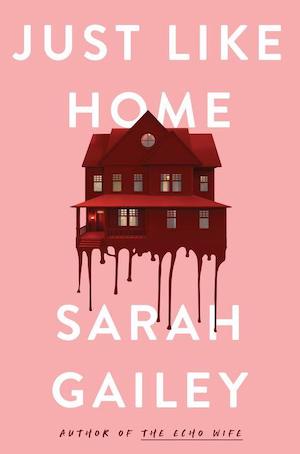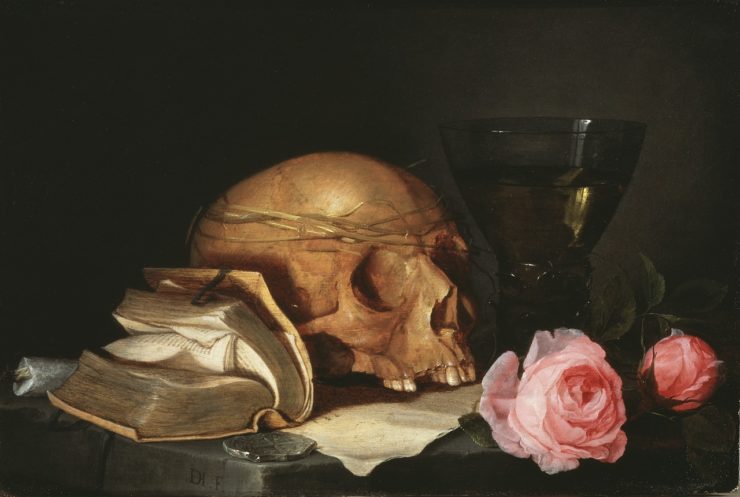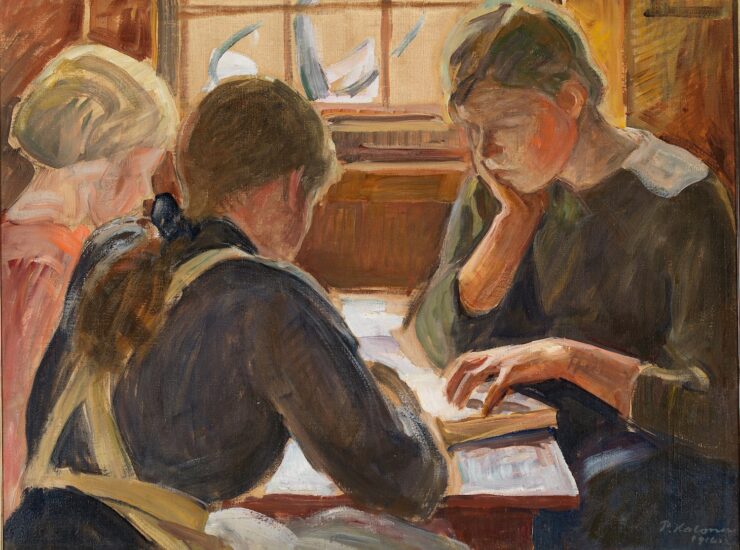I love horror, conceptually. I love horror people and horror authors and the way people write about horror and its purposes and meanings; I love reading Emily Hughes’ lists of excellent horror books, thinking about final girls, listening to smart friends talk about horror, reading so many smart people on their horror loves and perspectives.
But I hate—like really, really, really hate—being scared. I can tell you a lot of stories about being scared of things and mad about it—stories that begin with me as a child, traumatized by Ghostbusters and that Alice in Wonderland TV movie with the frightful Jabberwocky, and continue through recent years. (I will just say: I was lied to about The Descent.)
The trouble is, though, that I am extremely into certain vibes—the vibes of shadows and dark forests and Victorian houses that seem to loom, and the vibes of the season in which we now find ourselves. Fake cobwebs on shrubs, giant skeletons in yards, giant inflatable Oogie Boogies in more than one yard, and—best of all, in my neighborhood—the house that’s cleverly used cheesecloth to turn its front lanterns into eerie white specters that haunt a perfectly normal street. I want something I can enjoy that’s of the season—something to put in my cauldron and enjoy while nibbling fun-size candy bars.
And if you, too, are a scaredy-cat, maybe we can talk about those not-so-scary things together.
The thing I think is most important, when you are a scaredy-cat, is to understand the shapes and boundaries of the things you’re okay with. For me, I can take baby steps toward horror if it is self-aware. I learned this, years ago, with Scream, though after a certain number of movies I couldn’t do it anymore. But I love Buffy, of course, and The Addams Family and Cabin in the Woods and Tucker and Dale vs. Evil and Attack the Block: stories in which either the characters know what kind of story they’re in, or the whole concept of that kind of story is being flipped around and played with. Make it meta, make it knowing and clever, and somehow, my analytical brain trumps my scaredy-cat brain, and we all settle in with popcorn.
It is harder to know this about books, though, before you’ve gotten a decent number of pages into them. (Though I am absolutely open to recommendations.) So my bookish horror tiptoeing tends to be in certain corners: Vampires are great, usually, because they seem like their own genre, and because—like many a youth of the ’90s—I grew up on Anne Rice and saw Gary Oldman as Dracula at an impressionable age. And if you want vampire creepiness, you should do yourself a favor and pick up Holly Black’s The Coldest Girl in Coldtown, a book which made me run straight back into the arms of vampires at a time when I thought I was fully burnt out on them. Coldtowns are places where monsters and humans mingle—but once you’re in one, you can never leave.
Let’s be real: I would never go in. But I can still understand the temptation.
Buy the Book


Just Like Home
Young adult books that are creepy and haunting are sometimes a little more palatable for me than horror for grown-ups, though I can be scared silly by things that aren’t even really that scary. For example: Maggie Steifvater’s The Raven Boys. There are ghosts and graveyards from the outset, but I did not see this book’s twist coming, and spent a certain part of the novel walking around the house with the book in one hand, flipping on lightswitches with the other. I can’t tell you exactly what happened in that book, but I can recall with unnerving clarity how that felt, how empty the kitchen seemed, how I did not like my reflection in the window, how much I wished I wasn’t home alone.
What I’ve learned over the years, though, is that more things can be horror than you might think. I would never have thought of Helen Oyeyemi’s White Is for Witching as horror; to me it’s a sideways sort of fairy tale, full of the kind of magic and danger that seems to take place just beyond what you can see out of the corners of your eyes. But then, fairy tales are their own kind of horror, aren’t they? All those sliced feet and baked-up witches and lost children, broken mirrors and thorns and bitter, powerful jealousy.
What I do, when I want to read something on the edge of my tolerance levels, is look for something I already like, and see who has layered something creepy on top of it. Maybe it’s a type of character, or a setting, or a structure; maybe, for example, it’s the secret societies and class concerns of Ninth House, which gets really bleak and eerie and haunting in some parts. Maybe it’s the strange dystopia of The Girl With All the Gifts, dystopias being their own kind of horror, and zombies another. There are horror elements in lots of SFF, even if it’s not dramatically scary. There are specters and hauntings and horrible deaths in Thistlefoot, all that eerie flora and death in Annihilation, monsters of all stripes in more books than I can possibly name. N.K. Jemisin plays with horror in The City We Became, and Nicole Kornher-Stace crosses genres and timelines in Archivist Wasp.
You don’t have to read things that hurt. I’m never going to enjoy books with a lot of torture or graphic death, but on the other hand, I have read George R.R. Martin. I can’t claim I’ll never read those things. But genre boundaries are porous and ever-shifting, malleable based on your own experiences and desires. A fairy tale in one book is a horror story in another; a horror story told one way becomes a strange love story from another angle. The Expanse is a science fiction story about humanity’s reach exceeding our grasp; it’s also got a decent amount of body horror and can be read as a horror story about power and the loss of it, about disposability, about the beauty and terror of things beyond our comprehension. The Bone Witch is full of monsters of all kinds, but also full of love, and so, I fell in love with it.
I don’t want to be scared. Not quite. Not really. But there is a boundary along which I like to walk (boundaries being some of the most interesting locations you can find in any place, real or fictional—so flexible, sometimes, so remarkable and peculiar). There are ghosts on one side; there are friendly faces and bright sunlight on the other. Monsters there, sturdy walls here. The knowledge that there is always something that can hurt you, pressed right up against the knowledge that you’re probably safe. A real horror reader will walk right across that boundary, leaving the path immediately. Some of us will just stay close to the fire.
Molly Templeton lives and writes in Oregon, and spends as much time as possible in the woods. Sometimes she talks about books on Twitter.














